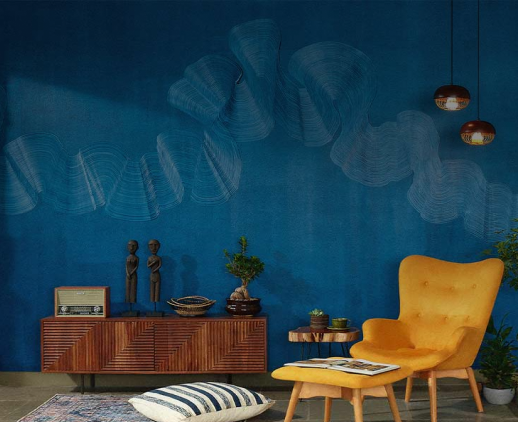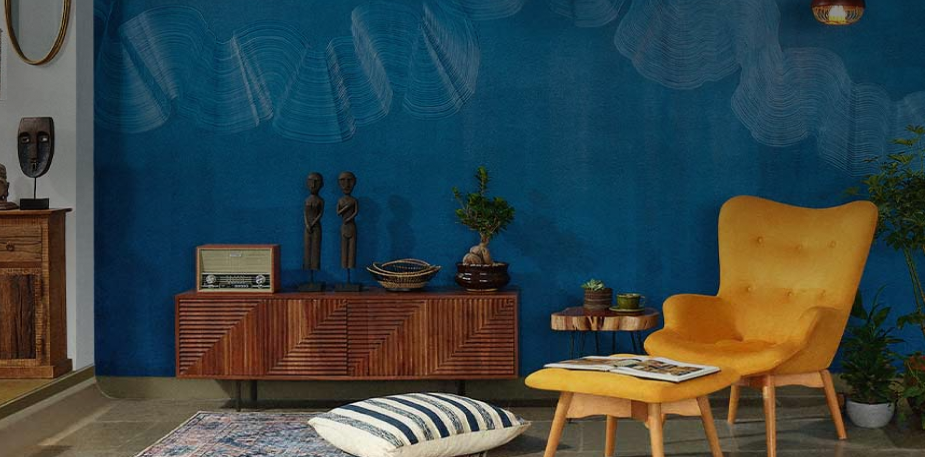Get your home interior design budget estimate
Photographer Pankaj Anand says he didn’t want a home that felt like a home

In an ongoing series titled Behind the Lens, we see how the country’s noteworthy interiors photographers create (and live in) their own spaces.
"Fluke!" exclaims Pankaj Anand, when recalling how he became a photographer. As a once-upon-a-time student of science, it was his first post-exam solo vacation across the country that made him discover his joy (and knack) for photography. "I had a basic point-and-shoot camera, and my father happened to appreciate the stuff I clicked. But I didn’t think much of it at the time," he says. After an uncle—in typical Indian parental fashion —asked him what he was going to do with his life, particularly with this skill, Anand decided to pursue a degree in photography from Rachana Sansad college, Mumbai.

Pankaj Anand at his gallery-style apartment in Mumbai.
Today, as a regular contributor for publishing houses, global hospitality chains and tourism boards, he boasts a vibrant portfolio ranging from tasteful interiors and architecture to jaw-dropping landscapes and prominent names in fashion. While he’s been living in his two-bedroom apartment in Mumbai with a spacious terrace for the past three years, his rigorous schedule as a photographer keeps him on the road almost every day. This has influenced his way of living a truly pared down life and discovering what living in a minimal fuss-free home in India truly means.
How did you discover this home?
It was pure luck—I heard about this apartment from a friend. I was looking for a space where I could live with my work, creating a small gallery of sorts to hang my photographs. I also wanted enough space to be able to organise a shoot here if I ever needed to.

Hand-woven cushion covers and a rug from Kashmir, a lamp from Ikea and a coffee table made from a tin box from Gujarat Trunk Depot tie the room together. Magnets collected from France, Andaman and Nicobar Islands, Channapatna and South Africa adorn the side of the table.

Hand-painted crockery by South African brand Kapula sits on placemats from the Louvre Abu Dhabi.

A bed sheet from Fabindia, blanket from Ikea, and Mario Miranda cushion covers from Goa make up the bed linens.
What was the space like when you first saw it?
Completely different from what it is now, and it was packed with too much furniture and a bit of junk left behind by the previous tenants. I wanted absolutely none of it, so I cleared out the entire house till it was a blank canvas for me to create the space I wanted.
What was your vision when creating a home here?
I didn’t want this space to feel like a home. For the past decade, I’ve spent around 200 nights in a year travelling for work. When you’re on a different location every other day, you don’t get the time to discover a single thing about it. Before you can think about settling in, it’s time to move on… leaving behind a bit of a vacuum in your heart. If I think about it honestly, I don’t want to ever give in to feeling that way. And capturing the perfect photograph is never planned—it usually involves stepping out of your comfort zone. So I didn’t want to think about feeling cocooned in a house or long to go back to a cosy space while being on my feet all day shooting.

The apartment was designed to feel like a makeshift gallery space to display Anand’s work. An untitled print of an elephant shot in Gujarat hangs above a chair customised by architect Ajey Shetty.
What was the renovation process like?
I didn’t have to renovate the house. The only thing I did was paint all the walls in a soothing sky blue, which also paired well with the Indian marble floors. For the furniture and rest of the home décor, I chose pieces that were pared down, extremely utilitarian, affordable, and very easy to maintain. It wasn’t a decision based on wanting to be frugal or saving money, but a choice that would make my constantly displaced life much easier.
Did you face any challenges along the way?
Not at all! It all came together very smoothly and ended up being quite a rewarding process. I had a very clear idea about what I wanted, which made all the decision making very easy. A lot of my furniture was painted by me with a can of spray paint…and I had a friend who helped me out along the way.
What are your tips for anyone looking to create their dream home on a budget?
Unless you don’t know yourself well, you won’t know what you need in your home interior design. Think about your habits, your temperament, and reactions to things around you to create a starting point for how you’d like to live. Having the knack to make sensible decisions quickly will be a bonus. After shooting several homes I’ve realised that everything that looks pretty is not always functional or easy to live with. You can’t replicate a Pinterest mood board or Instagram post in a room—it must, instead, be a fluid extension of you.
What are the kinds of homes have you shot over the years?
Everything from five-star hotel rooms, the sprawling grounds of palaces and palatial princely estates to intricate interior details in the nooks and corners of the humblest homes in the country.
Of all the spaces you’ve shot, which one is most symbolic to you?
That’s very difficult to answer! While I can’t pinpoint one home, the concept of the Ice hotel in Sweden echoed several sentiments and principles from my way of living. Each of the rooms can technically be described as igloos, as they’re made completely with ice. Every summer, the entire hotel melts and it’s rebuilt again in the winter. For me, this symbolised the way nature works—nothing in life is ever permanent. To be living a fulfilled life, you’re supposed to constantly rebuild yourself and not get stuck in a single way of being.
What are the styles you’ve learnt along the way, and which ones work best in an Indian home?
There can never be a singular style that can define an Indian home. And there shouldn’t be. If you look at the weather, topography, culture, and nuances across each state (and even within a state!) you’ll notice that the homes indigenous to these areas have worked out an architectural way of displaying and thriving in their conditions. Modern Indian homeowners, however, have become victims of herd mentality and have lost the vernacular language of building a home. The best style for any home is being true to the nature surrounding it and finding ways to blend it into each space.
After shooting so many homes and always being on the road for over a decade, what does the idea of a perfect home mean to you?
It should be like the definition of the word ashram: effortless. The perfect home for me would be a calm and peaceful retreat. While it’s nice to have history and emotion attached to it, it should also be a space where you’re at peace with yourself without needing any material objects to fill a void.

Get Started with your interior design journey with us!
Speak to our design professionals
What’s the status of your home possession?
What’s the condition of your home/space?
Will you be living in your space during the renovation?
 Previous Question
Previous Question
Is your interior design budget over 4 lakhs?
 Previous Question
Previous Question
Book next available appointment slots with our experts!
Please Select Date and Day
 Previous Question
Previous Question

Something went wrong!
We were unable to receive your details. Please try submitting them again.

Appointment Scheduled!
Thank you for giving an opportunity to Asian Paints Beautiful Homes Service! Our Customer Experience Specialist will get in touch with you soon.
Appointment Date & time
Thank You!
Our team will contact you for further details.
What’s the status of your home possession?
What’s the condition of your home/space?
Will you be living in your space during the renovation ?
 Previous Question
Previous Question
Is your interior design budget over 4 lakhs?
 Previous Question
Previous Question
Book next available appointment slots with our experts!
DEC 2023
Please Select Date and Day
 Previous Question
Previous Question

Something went wrong!
We were unable to receive your details. Please try submitting them again.

Appointment Scheduled!
Thank you for giving an opportunity to Asian Paints Beautiful Homes Service! Our Customer Experience Specialist will get in touch with you soon.
Appointment Date & time
17 Oct 23, 03.00PM - 04.00PM













































